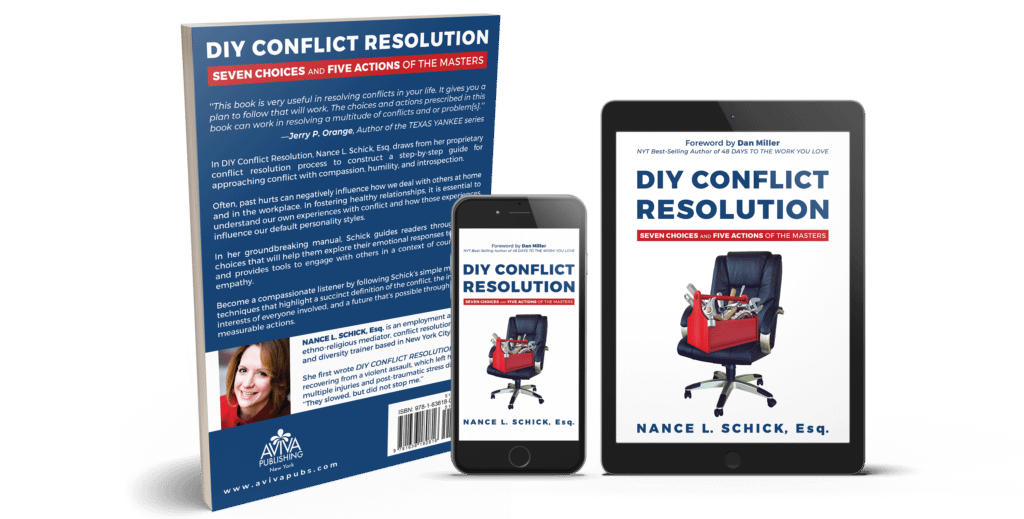Fostering empathy is not just a good and noble practice in workplaces; it’s a strategic necessity. A holistic employment attorney and mediator, for decades, I have seen the profound impact empathy can have on employee retention and overall workplace dynamics. These experiences were part of the inspiration for my first book, DIY Conflict Resolution: Seven Choices and Five Actions of the Masters, which includes a workbook to help you:
- Privately reflect on your response to specific conflicts
- Identify the thoughts, beliefs, and expectations fueling your response
- Practice your skills in listening with compassion, including to yourself
- Focus on the fullest possible range of solutions
- Take specific, measurable actions toward the results you want
- Plan, act, revise, and repeat as necessary
Below are some specific examples of how you can use the book to increase empathy in your workplace.
The Ripple Effect of Workplace Empathy
Beyond the statistics linking empathy to increased employee retention, how we navigate our professional lives extends far beyond the office walls. Our workplaces serve as arenas where we continue our education about life, relationships, and results. What we learn there can be applied outside of work to make the world a more empathetic place–a responsibility we all share, regardless of title or status.
Building Empathy Through Conversation
The Third Ear Conflict Resolution process discussed in DIY Conflict Resolution offers a comprehensive framework for developing empathy. Action Two specifically focuses on understanding the perspectives of others. Compassionate conversation is the key. We must recognize that every individual has a unique journey, shaped by experiences that may differ significantly from our own. Engaging in conversations that acknowledge and validate these differences is essential for cultivating empathy, especially in increasingly diverse workplaces.
Addressing the Emotional Employee
Acknowledging and addressing emotional situations in the workplace are among the most important actions you will take as a professional. I suggest a proactive approach. When faced with an emotional employee:
- Remove yourself, if necessary before responding. Simply state something to the effect of “I can see this is very important to you, and I want to discuss it with you when I am best able to resolve this. Let’s both take a break and speak at [specific time].”
- Ask questions to ensure you understand the employee’s concerns and their impact. Listen without judgment. Your agreement with the employee’s perspective is not necessary. Sometimes, it’s not helpful, either. You will never be able to fully experience the situation from another person’s view because you are different people with different combinations of biology, chemistry, neurology, lived experiences, and more. Focus on calming the fears, healing the hurts, and getting the results you both need.
- Commit to collaboratively improving performance. Employment is a partnership, and there will always be room for employee and organizational improvement. Rather than admonishing the employee for having an organic human response, acknowledge the concerns and look for ways to align them with the employer’s goals so everyone wins.
The Path to Authentic Empathy
While there’s no quick fix, consistent practice yields results. A few minutes of daily practice can transform empathy from a conscious effort to a natural response. Until empathetic interactions become second nature, we all need only stay on PARR:
- Planning our approaches
- Acting with careful intent
- Revising strategies as necessary
- Repeating the process until we’ve mastered the skill (and again when we let it wane)

